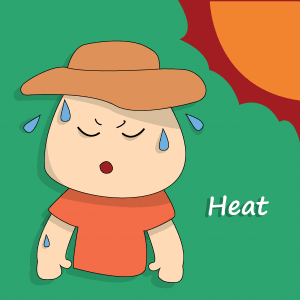High temperatures are a health and safety concern for those working outside, especially in agriculture.
Symptoms of heat stress, like fever, headache, nausea, and fatigue, can be difficult to recognize and can quickly worsen, causing illness, injuries, or even death. While heat stress is something to take seriously, it is preventable! Use this checklist to protect yourself and anyone working on the farm in hot weather.
SAFETY CHECKLIST
The checklist below lists a few ways you can be prepared and prevent heat related illness:
- Are special considerations given to workers who might be at higher risk of heat illness, like those who have preexisting conditions, are over 65, or are pregnant? This might involve providing frequent breaks in shaded or cool areas and making food and cold beverages readily available.
- Are hot, physically-demanding jobs scheduled early in the day with more people scheduled to do these jobs, to reduce the load on each person?
- Have all workers been trained to prevent, recognize and treat heat-related illness in themselves and others?
- Does each worker have their own water bottle? Is it washed daily?
- Is the location where workers get water disinfected and cleaned after each use?
- Can workers explain their location if they need to seek medical attention?
- Do workers begin each shift by drinking plenty of fluids, including electrolyte-containing sports drinks?
- Are workers given more breaks to rest and hydrate as the temperature rises?
- Do workers end each shift resting and drinking plenty of cold fluids to ensure their bodies cool down? Heat stress can become magnified over consecutive days.
- Does each worker know (1) how and (2) which medical provider to call in case of an emergency? Does the provider speak the workers’ language(s)?
- Are workers being acclimatized? In other words, are workers gradually increasing their exposure time in hot environmental conditions over a 7-14 day period?
You and/or your employee(s) can download and print a pdf checklist to complete safety checks on your farm. Keep the completed forms for follow-up, future reference and inspections.
DOWNLOAD PDF CHECKLIST
Disclaimer: The facts and information listed above are suggestions for your safety, but are in no way a comprehensive and exhaustive list of all actions needed to ensure your safety.



